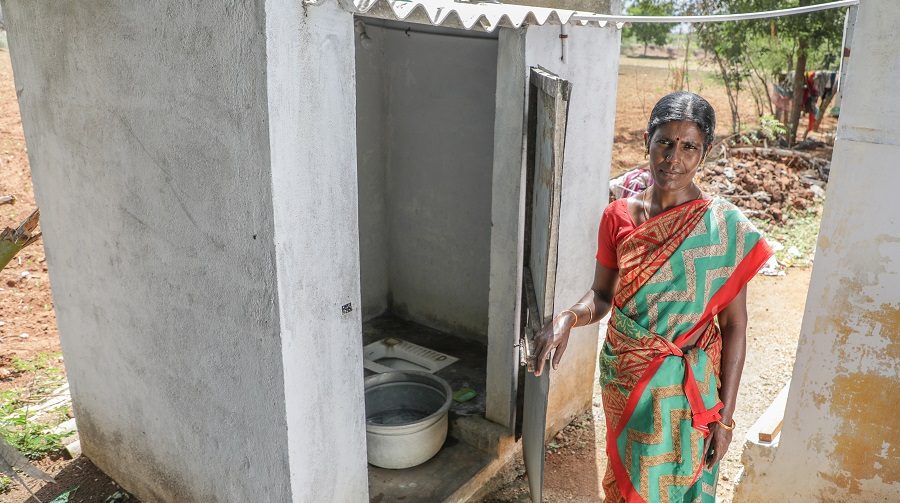
Sharp decline in anemia prevalence among pregnant Indian women when open-defecation rate drops below 50 percent
In a study published in Public Health Nutrition, researchers from the International Food Policy Research Institute, Public Health Foundation of India, and Oxford Policy Management have examined how a range of factors influence anemia prevalence among pregnant Indian women, finding a correlation between rates of open defecation and anemia. These research results demonstrate that prevalence of anemia among pregnant women declines sharply once open defecation rates drop below 50 percent.
Along with other South Asian countries, India is off track to meet the World Health Assembly target of a 50 percent reduction in anemia among women of reproductive age between 2012 and 2025. One in two pregnant women in India are anemic. Anemia during pregnancy is particularly worrisome as it affects both the mother and the developing child. Outcomes associated with anemia during this critical period include maternal mortality, risk of infection, preterm delivery, and poor fetal and infant health.
In the last 10 years, anemia has declined by 2 percentage points (pp) in non-pregnant women (from 55 percent to 53 percent) and by 8pp in pregnant women (from 58 percent to 50 percent) according to the third and fourth rounds of the National Family Health Survey. This translates to between 0.2-0.8pp decline per year, far below the targeted 7pp per year.
IFPRI researchers and authors of this study, Samuel Scott and Suman Chakrabarti are delighted that this analysis comes at a time when Government of India’s National Nutrition Mission, the Ministry of Health and Family welfare have launched Anemia Mukt Bharat (Anemia free India). In the current context of policy interest, it is imperative to understand which factors have been responsible for the biggest anemia reductions so far, and to strengthen investments targeting those factors.
Media coverage of the analysis has highlighted on the fact that efforts to reduce prevalence of anemia among pregnant women should use a holistic approach, including promotion of delayed marriage, construction and use of toilets, and measures that facilitate adoption of nutrient-rich diets. Here below we have listed some of the media coverage.
- The Tribune - Less open defecation key factor in reducing anaemia among Indian women
- Hindustan Times - Anaemia among pregnant women lessens as open defecation reduces
- The New Indian Express - Anemia among pregnant women drops as open defecation declines
- Business Standard - Anemia among pregnant women drops as open defecation declines
- Outlook - Anemia among pregnant women drops as open defecation declines
- India Today - Anemia among pregnant women drops as open defecation declines
- The Print - Curbing teen pregnancy can help check India’s anaemia epidemic, study finds
- The Hans India - Anemia among pregnant women drops as open defecation declines
- Latestly - Anemia Among Pregnant Women Drops as Open Defecation Declines
To request the research article or for further questions about this research, please email us at IFPRI-POSHAN@cgiar.org stating “Request for PHN paper on anemia” in the subject line.


